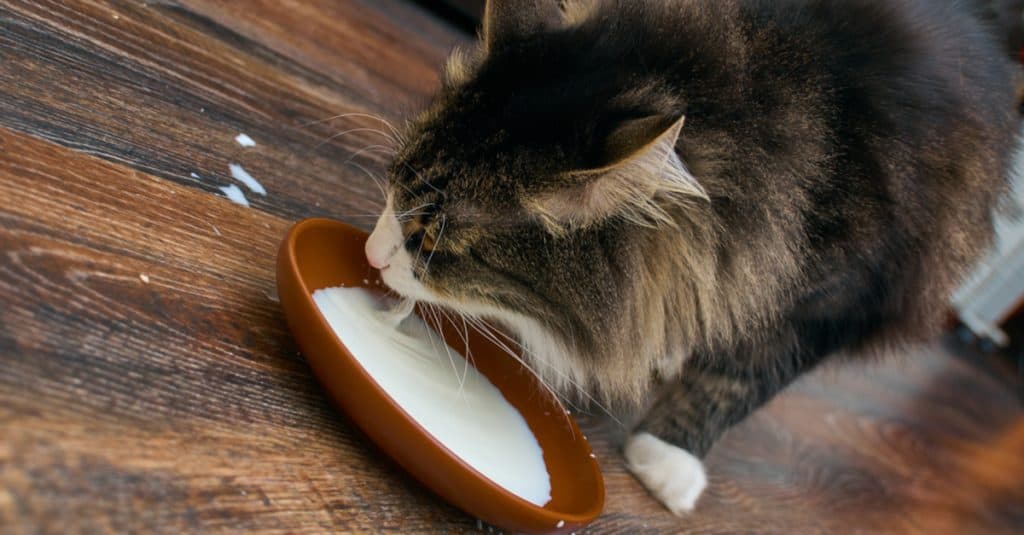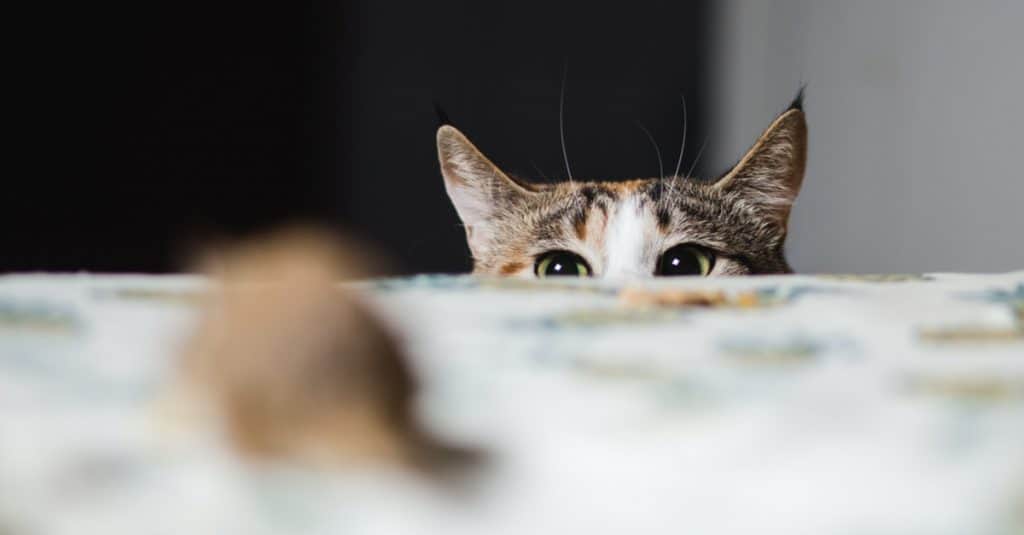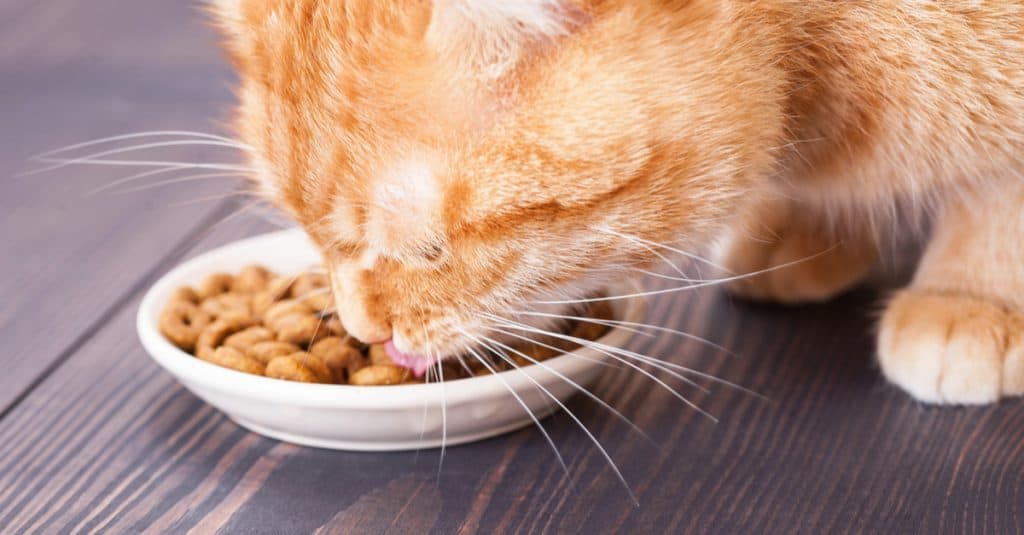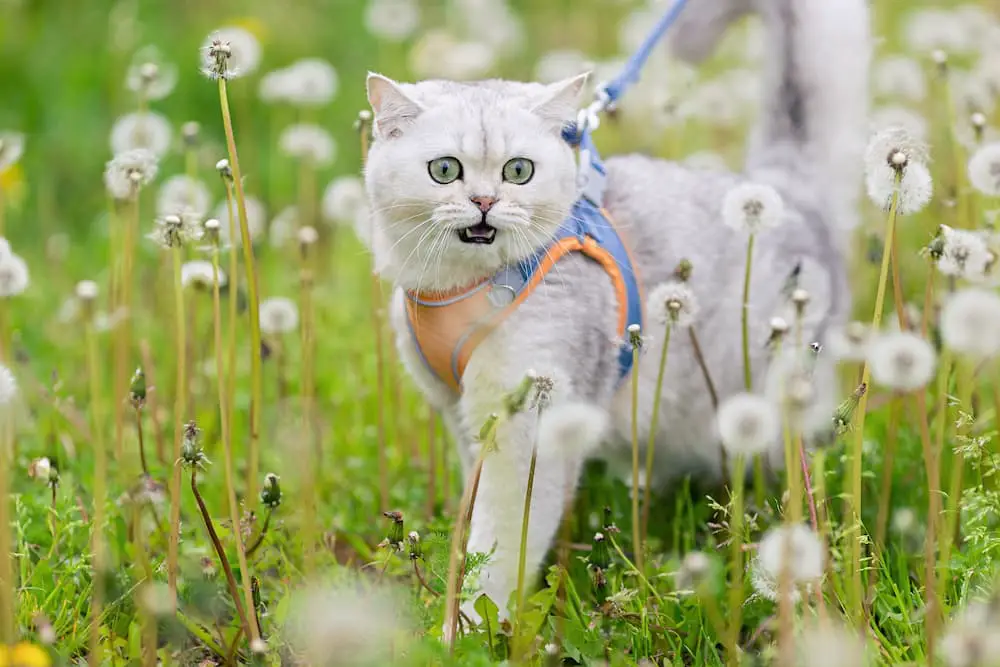There are a lot of misperceptions out there when it comes to cats and food.

People often think of fish as an ideal cat food, and envision kitties lapping up a saucer of milk. But did you know that both fish and milk are less than ideal snacks for cats?
For those people who believe in an “ancestral diet” – similar to paleo for humans – and believe that cats should eat a diet as close to what they would find in nature as possible, you’re in luck. We’re going to be looking at what cats actually eat in the wild, and whether it’s a high quality diet you should attempt to replicate.
Feral And Wild Cats Eat A Lot Of Small Mammals

A 2011 study published in the British Journal of Nutrition looked at past studies of wild and feral cat nutrition. With 30 data sets from 27 different studies from all around the world, they were able to determine what type of foods cats eat in the wild. Based on these foods, they were also able to come up with an estimate macronutrient profile for a “typical” wild cat.
The studies found that cats eat a lot of:
- Rabbits
- Rodents, and
- Birds
They also eat some reptiles and amphibians, invertebrates, and very small amounts of fish and carrion. Rabbits make up the largest single food source, coming in with a mean value of 41.5% across all the data sets. Rodents were next, with a mean of 31.9% (made up mostly of rats, mice, and voles), and birds came third, with a mean of 16%. Interestingly one population of wild kitties consumed birds for over 96% of their diet! The most that fish made up of any one feline population’s diet was 9.5%, and most studies showed that fish were not eaten at all.
It’s clear, then that cats in the wild will consume small prey animals that are fairly lean. They prefer things that are high in protein and relatively low in fat. So what does this look like in terms of macronutrients (protein, fat, carbohydrate)? The researchers concluded that feral cats have a daily energy intake that consists of 52% protein, 46% fats, and N-free extract (mostly carbs) of only 2%.
This is certainly a far cry from most commercial cat foods!
We can put this data another way by converting it to a dry-matter basis. Dry-matter basis is a useful way of figuring out the macronutrient contents of different foods by removing moisture from the equation. In this way, we can even compare wet and dry foods accurately!
On a dry-matter basis, that looks like:
- 62.7% Protein
- 22.8% Fat
- 2.8% N-Free Extract (Carbs)
Again, compare that to the food you’re feeding your cat and see how close you get. I can tell you, since I’ve rated and reviewed 2000+ cat foods in our database that there are only a handful of commercial foods that come anywhere close to those numbers.
Across our database of 2000+ cat foods, the mean numbers look like this:
- 49% Protein
- 18% Fat
- 15% Carbs
Obviously, some are better than that, but there are many that are much worse…I’m talking about 40%+ carbohydrates!
Should Cats Be Eating A “Wild” Diet?

While there are no studies that really compare the health and diet of wild/feral cats and house cats, there is an interesting study that was done that shows that house cats self select to get very close to this “intake target”. In this study, cats were given the choice between a variety of foods. They were free to eat what they wanted, basically, and yet the results were very similar. The cats were offered low quality (in my opinion) commercial cat foods to choose from, so the results would never have been exactly the same, but here’s an idea of the average macronutrient profile that house cats self selected in this study (on a calorie basis):
- 52% Protein
- 36% Fat
- 12% Carbs
Wow! Very similar.
This may convince you that cats do wish to eat a diet that is high in protein, moderate in fats, and very low in carbs. And remember, cats have only been domesticated for a few thousand years. Nowhere near long enough for their digestive tracts to have evolved much differently than their wild cousins. Plus, most of that domestication was based on the fact that people wanted cats around to hunt mice so that the rodents didn’t eat their grain stores! While a high quality commercial food will do the trick and keep your cat happy and healthy, I believe this information shows that it’s important to choose a food that comes close to meeting the macronutrient levels of a wild diet.
Wrapping Up
Cats mainly eat rabbits, rodents, and birds in the wild. That means they get about half of their calories from protein and half from fat. They eat virtually no carbohydrates. Whether a cat can live a fairly long life on “low quality” commercial cat food isn’t the issue here…I’ve known plenty who have! The issue is whether your cat will have an even longer, even better, even healthier life, with less pain and less risk of disease, if you feed a near-natural diet.
The choice is yours, but it’s clear what your kitty would choose!
About the Author:
Emily Parker is a cat mom to 2 black cats, Gus and Louis. She’s spent much of the past year researching and rating commercial cat foods to create an exhaustive cat food database. She’s published the best of the best from her findings, and will be publishing the entire database later this year. Her blog, Catological.com, helps over 200,000 cat parents love their kitties better every month.







